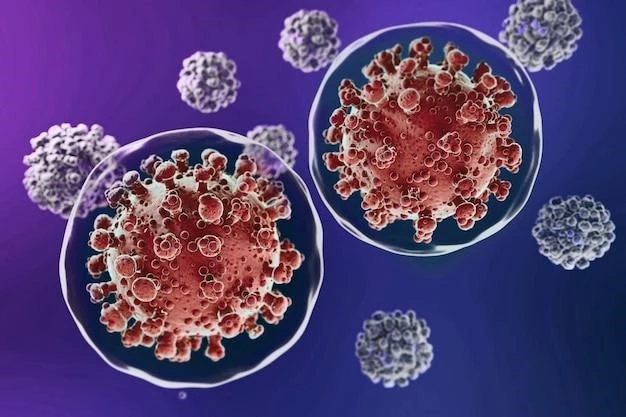Introduction
This section provides an overview of Peripheral T-cell Lymphoma, a rare type of non-Hodgkin lymphoma that develops from mature white blood cells․
Definition and Overview of Peripheral T-cell Lymphoma
Peripheral T-cell lymphoma is a relatively rare type of non-Hodgkin lymphoma that originates from mature white blood cells known as T-cells and natural killer cells․ It is a diverse group of lymphomas with distinctive presentations and histologies, often associated with poor prognosis․ This type of lymphoma includes subtypes such as angioimmunoblastic T-cell lymphoma and anaplastic large cell lymphoma․ Patients with peripheral T-cell lymphoma may experience a variety of symptoms, including enlarged lymph nodes, fever, weight loss, and skin changes․ Diagnosis and treatment are critical in managing this aggressive disease․
Clinical Presentation
Patients with Peripheral T-cell Lymphoma may experience night sweats, fever, weight loss, enlarged lymph nodes, and skin changes․ Common associated laboratory findings include anemia, thrombocytosis, and increased lactate dehydrogenase levels․
Symptoms and Characteristics of Peripheral T-cell Lymphoma
Patients with Peripheral T-cell Lymphoma may experience symptoms such as night sweats, fever, weight loss, enlarged lymph nodes, splenomegaly, and skin changes․ Common laboratory findings may include anemia, thrombocytosis, lymphocytosis, eosinophilia, hypergammaglobulinemia, or increased lactate dehydrogenase levels․ Early diagnosis and prompt treatment are essential for managing this aggressive form of non-Hodgkin lymphoma․
Diagnosis
Diagnosing Peripheral T-cell Lymphoma involves a combination of physical exams, imaging tests, blood work, lymph node biopsy, and bone marrow examination․ Early and accurate diagnosis is crucial for effective treatment․
Methods and Procedures for Diagnosing Peripheral T-cell Lymphoma
Diagnosing Peripheral T-cell Lymphoma typically involves a series of methods and procedures including physical examinations, imaging tests such as CT scans and PET scans, blood work to evaluate cell counts and biochemical levels, lymph node biopsy for histological examination, and bone marrow examination to assess the extent of the disease․ These diagnostic steps are crucial for accurate identification and staging of the condition, guiding subsequent treatment decisions for patients․
Treatment
Managing Peripheral T-cell Lymphoma typically involves a combination of chemotherapy regimens such as CHOP, targeted therapy, radiation therapy, stem cell transplant, and clinical trials for advanced cases․ Early diagnosis and personalized treatment plans are crucial in addressing this disease effectively․
Current Approaches and Therapies for Peripheral T-cell Lymphoma
The current approaches for treating Peripheral T-cell Lymphoma involve a combination of chemotherapy regimens such as CHOP, targeted therapy, radiation therapy, stem cell transplant, and participation in clinical trials for novel treatments․ Targeted therapy directed at specific molecular pathways is being explored to enhance treatment outcomes and quality of life for patients with this challenging disease․
Prognosis
Understanding the prognosis and survival rates for patients with Peripheral T-cell Lymphoma is crucial for making informed decisions about treatment options and managing expectations․ Early diagnosis and a personalized treatment plan can help improve outcomes in dealing with this challenging disease․
Outlook and Survival Rates for Patients with Peripheral T-cell Lymphoma
Understanding the outlook and survival rates for patients with Peripheral T-cell Lymphoma is essential as it helps in determining the effectiveness of treatment options and setting realistic expectations․ Early detection and appropriate interventions are key in improving the prognosis and quality of life for individuals battling this complex form of non-Hodgkin lymphoma․

Ongoing Research
Stay informed about the latest research on Peripheral T-cell Lymphoma to understand emerging treatment options and potential advancements in managing this complex disease․ Always consult with healthcare providers for the most up-to-date information․
Recent Studies and Developments in the Field of Peripheral T-cell Lymphoma
Keep up to date with the latest research and advancements in the field of Peripheral T-cell Lymphoma to stay informed about innovative treatment approaches and potential breakthroughs․ Consult reputable sources and medical professionals for the most recent updates on this complex disease․

Staying informed about Peripheral T-cell Lymphoma is crucial for understanding the latest research, advancements in treatments, and emerging therapies․ Consult with healthcare providers to receive the most up-to-date information on managing this complex disease effectively․
